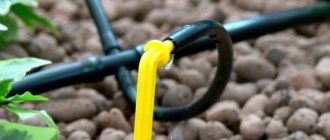To make work in the country easier, forward-thinking craftsmen acquire all kinds of equipment. It is especially recommended to carefully select units for working with soil, since this requires not only annual excavation of the soil, but also loosening, removing weeds, and so on. And in this case, the cultivator will be indispensable.
However, there are so many options that it is difficult to choose the most suitable device. It's important to consider how you plan to use it, in what areas and how often. “KP” will help you - we’ll tell you about the best cultivators for the garden in 2022.
What are they used for?
Tilling the soil before sowing is the most important stage that affects the quality and volume of the future harvest.
Until the end of the 20th century, most summer residents used hand tools: rakes, shovels. Pre-cultivation of the soil took days or weeks, depending on the size of the plot. Motorized cultivators made it possible to reduce the time of loosening and other necessary operations by several times.
What functions can the unit perform:
- weeding - working cutters go deep into the soil by about 80-100 mm, grinding weeds and their roots;
- aeration of the site - during loosening the soil is saturated with oxygen, which will have a beneficial effect on the quality of the crop in the future;
- haymaking is a necessary activity for preparing feed; for this there are special attachments for the cultivator;
- deep plowing or surface loosening - also carried out using attachments - blades or cutters;
- hilling, harvesting potatoes - the cultivator will help you quickly cultivate the land or harvest even on a large plot;
- collecting grass after mowing - the unit, if equipped with a special rake, will make it possible to collect future hay;
- watering - if you have a water pump, you can speed up the process of moistening the soil;
- transportation of goods - a gasoline engine will help the owner move a tool or crop around the site.
Before purchasing the unit, you should check with the seller which attachments are included. This depends on the specific model and manufacturer.
Walk-behind tractors and walk-behind cultivators: what's the difference?
Working on the ground requires considerable effort. Modern technology can significantly simplify this difficult work. For example, walk-behind tractors and walk-behind cultivators will make plowing, weeding, hilling and some other operations easier. The main difference between a motor cultivator and a walk-behind tractor is the power and the number of operations they can perform.
They are similar in purpose, but differ in power, number of operations performed, and depth of tillage.
Motor cultivators are small, lightweight devices with a capacity of 3-6 horsepower. The main purpose is to loosen the soil using a milling cutter. Other operations and work with other implements are possible, but not on all models and not with all soils.
Walk-behind tractors are more powerful devices - from 7 hp. - with a wide range of functions. They can cope with plowing (working with a plow), loosening (milling cutter), hilling, mowing grass, etc. As an additional function - the ability to transport goods or move a small trailer.
Classification of motor cultivators with internal combustion engines
Aggregates are classified according to several criteria. The most common are motor cultivators with low-power gasoline engines.
They can be classified by weight:
- lungs;
- average;
- heavy.
| Farmer I.I. Fadeev explains. |
| Lightweight devices are distinguished by a small engine with a power of up to 2-3 horsepower and a weight of about 15-20 kg. They are capable of cultivating the soil to a depth of 20-25 cm. Perfect for small plots or medium-sized vegetable gardens of 6 or more acres. They are quite light and maneuverable. Medium and heavy motor cultivators are needed to work on medium and large plots of 20 acres or more. Although such units are heavier, they are equipped with more powerful engines, so it is possible to cultivate the soil for a long time. |
Differences by motor type:
- In 2-stroke engines there is no valve system; a mixture of gasoline and oil flows from the tank into the carburetor, and from there into the block window. Such a device has two disadvantages: relatively high fuel consumption, low efficiency (low efficiency).
- The four-stroke system is distinguished by the presence of valves through which pure gasoline enters the cylinders and combustion products are discharged out. Such engines operate more smoothly (less noise and vibration) and consume less fuel. But their maintenance and repair may take longer due to their design features.
Classification by transmission type: the simplest walk-behind tractors are not equipped with gearboxes, so during operation they can only move forward under their own power.
Units with a gearbox allow you to change speeds - at least - 1 forward, 1 reverse. This makes work easier, especially on large areas or if it is necessary to transport goods or perform other household duties.
Light class motor cultivators have motor power from 3 to 5 horsepower. Their weight can reach up to 45 kg. The soil cultivation of such devices ranges from 5 to 20 cm, and the width of the working bodies can reach up to 40 cm.
The power unit for these systems is precisely a 2- or 4-stroke engine. These models can be easily disassembled and transported in cars. Lightweight gasoline cultivators are designed for cultivating small plots of land, flower beds, and flower beds.
Maximum width and depth of cultivation
Tilling width is the maximum strip width that the cultivator can cover. A very narrow coverage adds time that is required for high-quality soil cultivation. The width of the processed strip depends on the engine power. Approximately 1 hp required for twenty centimeters of land covered in width. A wide grip is more convenient for processing large areas of land. If weeding between beds is important, then a narrow grip is more convenient.
The tillage depth reflects the distance to which the cultivator cutters penetrate the soil. As a rule, it is directly proportional to the diameter of the cutters. In some cases, the manufacturer separately indicates the cutting depth and cutter diameter. The average value usually does not exceed 25 cm. The tillage depth is set by the adjustable position of the coulter (a strong metal strip that is vertically fixed to the rear of the cultivator). The cutting width is usually adjusted by installing various cutters.
Cultivator with a maximum cultivation width of 1050 mm ZIGZAG GT 903
Cultivator with a maximum cultivation depth of 350 mm Workmaster WT-85
What else to look for when choosing
What type of engine is on your gasoline cultivator?
2-stroke4-stroke
- The weight of the motor cultivator is a lightweight unit, convenient to use in small areas, easy to transport in a car, and does not take up much space. But when working on “heavy” soils with large clods of earth, you may encounter difficulties - the mechanized device will bounce, which will force you to specifically load it with additional weight.
- Clutch type - worm gear or chain drive. The first option is not considered suitable for heavy work that takes many hours, but it is suitable for processing small areas. Medium and heavy units are equipped with a chain drive that can withstand loads well.
- The number of wheels, their diameter - small and medium cultivators have 1-2 wheels, heavy ones - at least 2. At the same time, the larger their size, the easier it will be to roll the cart on uneven ground. The weight of large models can reach 70 kg or more.
Processing width – average value for all models – 230-850 mm. You need to focus on the size of the plot and the type of work that will have to be performed. A narrower body may be required to mow complex lawns.
- Delivery set, type of attachments that can be used in conjunction with a motor cultivator - the more different cutters and attachments that are sold with the unit, the less you will need to buy them in the future. To work with rough soil, it is desirable to have special steel wheels with hooks - they will make it easier to plow soil with large clods and prevent the motor cultivator from bouncing during operation.
- Fuel consumption depends on the type of engine and model. Usually the manufacturer indicates underestimated values. But with proper feed settings, you can often achieve greater efficiency, albeit with a decrease in power.
- Brand, warranty period - most manufacturers give 1 year, it is important to clarify whether there are service workshops in the city that service this particular brand.
Types of cultivators
The list of types of these devices is quite wide, and the differences are fundamental: in some cases you cannot even say that the tools belong to the same group of tools.
Manual
The simplest equipment, its main purpose is to process a small area. The loosening depth is small, but hand tools can work in confined spaces. Of course, they lag behind other devices in terms of speed and quality, but still the process occurs faster and easier than when using a shovel, hoe and rake.
There are two types of hand-held instruments:
- Rotary - a shaft with “stars” put on it, often a knife is also added to them for trimming the roots of weeds. For comfort, the handle of the tool is made long, so you don’t have to bend over.
- Rippers will help where rotary models are powerless: on clay and heavy soils. They look like a handle with 3–5 sharp hooks at the ends. The handle can be either long or short. When working, you will have to put in a lot of effort, because you need to “stick” the teeth into the ground and pull them towards you.
This type of equipment would be nice to have, even if you have a more advanced mechanism. They will come in handy when plowing hard-to-reach areas and, if necessary, loosening a small piece of land.
For tractor
Tool for agricultural land. These are huge implements that are attached to tractors and in this form can process wide swathes at once. The productivity of such units is colossal, but they can only be used for the field, and not on a summer cottage plot of 6–10 acres.
There are the following groups of cultivators for tractors:
- Steam - needed to care for fallows and prepare the soil for sowing. As a result of such plowing, the soil turns out to be finely lumpy; the lower layers are not brought to the surface, retaining moisture. They are also used to trim the roots of weeds.
- Row crops - inter-row cultivation of crops is carried out with them: the grass is removed in the intervals, the soil is loosened for better air supply to the roots and the potatoes are hilled.
- Special - used in the care of certain crops that require special handling. For example, beets, cotton, watermelons and melons, tea.
Self-propelled
The most popular option among amateur gardeners. They combine several positive features: they allow you to process large areas, take the load off a person, are quite compact, and have a wide range of models.
Motor cultivators differ from each other in many parameters, and this particular group of gardening tools is very popular among the population, so we will look at their characteristics in more detail.
Quite often, confusion arises between a motor cultivator and a walk-behind tractor. Their main differences lie in size and capabilities: the walk-behind tractor is larger and is capable of processing a much larger area than its less massive counterpart. The quality of the processed soil layer is also different: the cultivator does not turn over the block like a walk-behind tractor.
Division by class
Cultivators are conventionally divided into three classes:
- Heavy versions (more than 60 kg), capable of cultivating up to 30-50 acres of any land.
- Medium-heavy equipment (from 30 kg), which can also cope with untreated areas of 10 to 30 acres; are considered the best cultivators for the garden and are in greatest demand.
- Lightweight options can easily cope with an area of 3-5 acres, are convenient for loosening beds, lawns, flower beds, as well as greenhouses, even for women or elderly people, and are as compact as possible.
Each model has its own advantages and range of operating conditions.
Rating of TOP 4 best models
| Place | Name | Price |
| TOP 4 best cultivators | ||
| 1 | Daewoo Power Products DAT 4555 | 19 000 ₽ |
| 2 | Daewoo Power Products DAT 5055R | 22 000 ₽ |
| 3 | MOBILE K MKM-MINI MIL0016682 | 18 000 ₽ |
| 4 | Huter GMC-5.0 | 14 000 ₽ |











